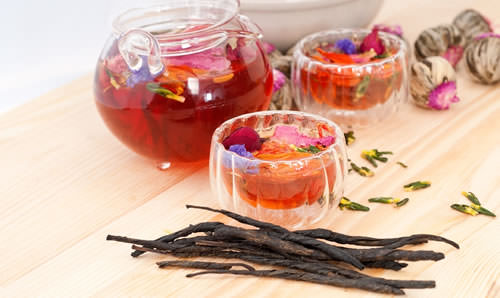
7 Herbs Commonly Used to Treat Candida
If you're a candida sufferer, you know how difficult it can be to find a method to successfully control that common fungus once it begins to grow uncontrollably within your body. The myriad candida symptoms detract from your quality of life and create a variety of health challenges such as yeast infections, oral thrush, weakened immune systems, and dozens of others.
Many people have found herbal remedies are an effective, natural method to take control of candida albicans and eliminate frustrating symptoms. Here are seven herbs that successfully treat candida. Could they be the solution to your candida infection?
Garlic
The University of Maryland reported that garlic, which contains sulfur compounds, has proven antifungal properties and advocated it as a treatment for candida. Garlic also acts as a natural antibiotic which, unlike traditional antibiotics, fights the harmful bacteria while promoting beneficial microbes.
Garlic can be added to your diet by either eating one or two cloves daily or it is available in pill form. It is suggested that when taking garlic pills you choose enteric-coated capsules, which protects the garlic until it reaches the intestinal tract where the majority of the candida yeast resides.
Berberine Containing Herbs
Berberine is found in a number of herbs, including barberry, goldenseal, and Oregon grape root. These herbs are staples of ancient Chinese medicines used for treating fungal, bacterial, and viral infections. Berberine stimulates the immune system and promotes the body's ability to protect against fungal infections.
It is noted that if you choose to obtain berberine by ingesting goldenseal, goldenseal can irritate the liver so should only be taken for two weeks, then omitted for seven days, then can be taken for another two weeks, etc.
Oregano Oil
A Georgetown University Medical Center study shows that oregano oil completely stops the growth of a candida infection. The same study states that "the daily oral administration of origanum oil may be highly effective in the prevention and treatment of candidiasis."
Carvacrol and thymol, both natural antimicrobial agents found in oregano, are believed to react with water in the bloodstream to dehydrate and kill candida cells. One more study shows that carvacrol is more effective than 18 prescription drugs at eliminating harmful microbes.
It is recommended that 3-6 drops of oregano oil mixed with a glass of water or some coconut oil be taken twice daily for maximum effectiveness. It can also be taken in enteric capsules or applied directly to candida skin infections.
Cinnamon
Cinnamon does more than just taste good: it's also an effective antifungal agent and it contains antibacterial and antiparasitic properties as well. It has been used for centuries to treat numerous maladies. Besides killing fungus, cinnamon is also known to relieve pain and cold and flu symptoms, suppress urinary tract infections, increase insulin efficiency, and calm upset stomachs.
To treat candida it is recommended that you drink a tea made of half a teaspoon of cinnamon and boiling water or you may substitute 3-4 drops of cinnamon essential oil. This should be consumed daily.
Pau d'Arco
Pau d'Arco comes from the bark of the tree with the same name. It is well known for its antifungal properties and its ability to halt the growth of candida albicans. It also has a mild laxative effect which helps the body eliminate toxic elements. Pau d'Arco contains a compound called lapachol that is an especially potent antifungal agent. Drinking a cup of Pau d'Arco tea each day could help you free yourself from candida overgrowth.
Echinacea
Echinacea is a common flowering plant that has nine species; you may know it as Black-Eyed Susan or the purple coneflower. In addition to being used as a popular remedy for colds and flu, echinacea is believed to boost the immune system, promoting the production of white blood cells, which helps restrict the growth of candida albicans.
Echinacea is available in capsules, liquids, or may be made into teas. This is another herb that the body needs the occasional break from so after taking it for a month, don't use echinacea for a week. After seven days you may resume your echinacea routine.
Neem
This is an herb widely used in Ayurvedic medicine. It is a potent antifungal agent and demonstrates antibacterial properties. It is also an effective immune booster and powerful detoxifier. A dose of 20-40 drops of neem in water or juice 2-3 times a day is recommended for treating candida. Neem may also be applied directly to skin to treat psoriasis, athlete's foot, and other issues.
Mother nature has gifted humanity with a vast collection of herbs to treat a variety of afflictions, including the harmful effects of candida. It is recommended that you talk to your health care provider before starting any herbal treatment and many herbal remedies are not recommended for women who are pregnant or nursing. For many people, however, herbs are the secret to living a candida free life.
About the Author: Dr. Eric Bakker has dedicated the past 20 years of his life to the study and treatment of Candida. Have questions? Visit him at the Curezone Forum to ask.
Also check out our related pages on:
Bill's Anti-Candida Diet Protocol
Natural Candida Yeast Infection Cures
Yeast Infection Remedies
Fungal Infection Treatments
